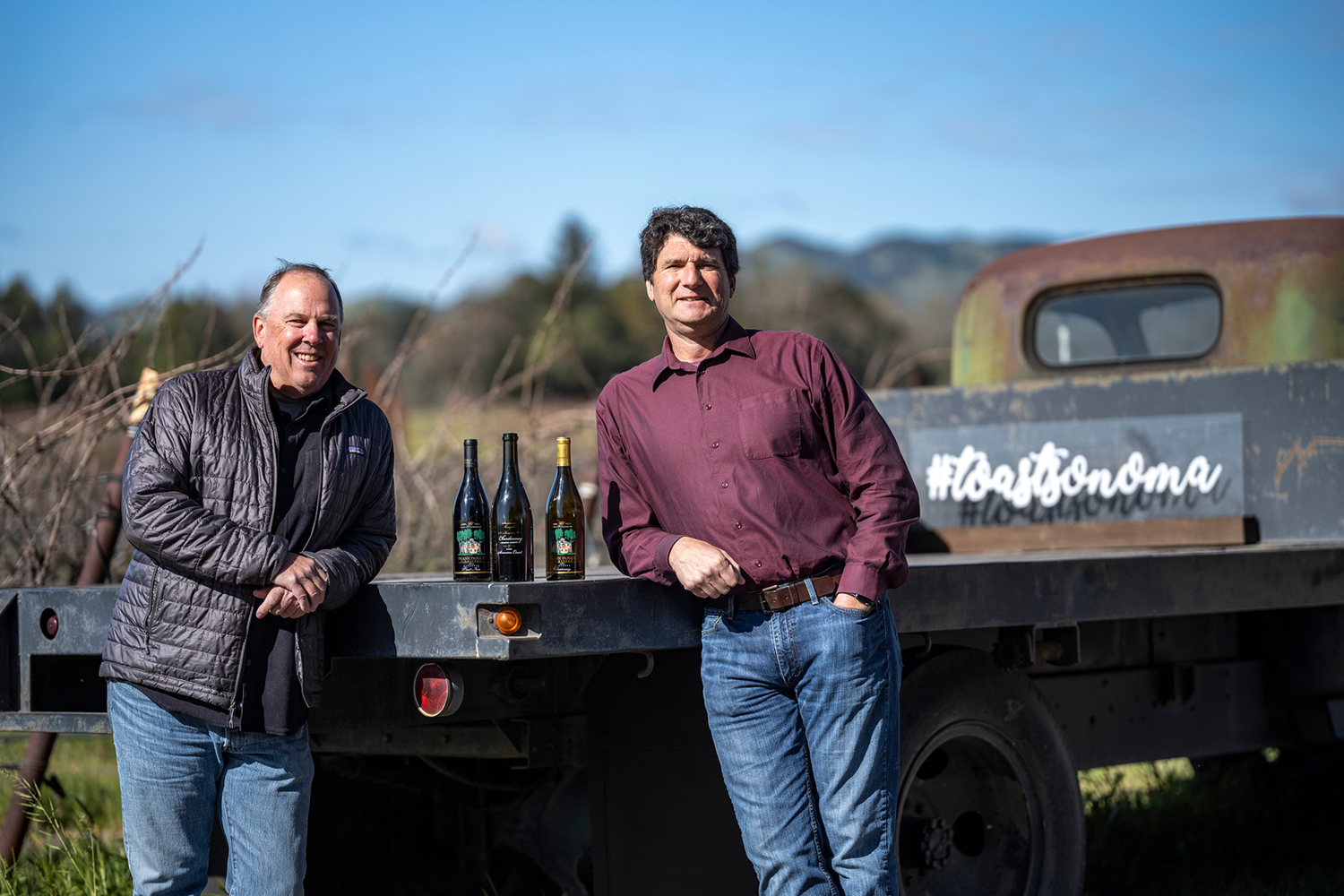Since 2012, Frank Family has sourced Chardonnay and Pinot Noir grapes from Sangiacomo Family Vineyards, whose ranches span throughout Carneros, Sonoma Coast, Petaluma Gap, and Sonoma Valley. There is a waiting list of renowned winemakers who hope to one day receive fruit from their highly sought-after vineyards and Frank Family considers ourselves grateful to be among the lucky few.
Sangiacomo fruit is blended into three distinct wines in the Frank Family portfolio including our appellation-designate Carneros Chardonnay and Carneros Pinot Noir as well as our wine club exclusive, single vineyard Sangiacomo Chardonnay coming entirely from the family’s Kiser Vineyard in the Sonoma Coast AVA.
Read along as Frank Family’s Winemaker and Sonoma County native, Todd Graff interviews Mike Sangiacomo, third generation grape grower, to examine the uniqueness of the Carneros region, to discuss farming then and now, and to think about how we can continually improve our approaches to sustainability.

T: Tell us some history about your family. How did they end up in Sonoma County?
M: My grandfather immigrated from the Genoa region of Italy. He was initially living in San Francisco before moving to Sonoma in 1927. He happened to be visiting a friend when he found our Home Ranch and eventually was able to garner enough money through the sale of some interests in the garbage collecting business in the city to purchase the property. At the time, the ranch was mostly planted to fruit trees such as prunes, pears, apples, and cherries. It was not until 1969 that my family began the conversion from fruit trees to grapes. I think that’s really where his heart was, he loved farming. When he was back in Italy, his family didn’t have a lot of land, but he was always around agriculture. He really enjoyed it. When he found this piece of property, it struck a chord in his heart. As you look at the rolling hills behind the vineyard, it is very similar to his hometown.
He later met my grandmother, who was also from Italy and had four children, my Aunt Lorraine, my father Angelo, and my uncles Buck and Bob. They all grew up working on the ranch. My dad and uncles used to say “kids today look forward to summer break, we didn’t. We looked forward to going back to school because we didn’t have to get up and work every day. school was easier.” As the family grew, the number of vineyards we acquired also grew.

T: I enjoy the amount of diversity Sonoma County offers. In addition to grapes, Sonoma has the ocean, the lumber industry, and the fishing industry. Do you think grapes are becoming more and more dominant?
M: They have and they haven’t. There are still some apple farms and quite a few dairies. I mean, there’s still some diversification in Sonoma County, but you are right. Sonoma County did have a big push in the 1980s, 1990s, and early 2000s into wine grapes and so it has become dominant, but not the single only agricultural aspect of the county. They are, however, the dominant agricultural economic driver in Sonoma County at this point.

T: What was the story behind the different vineyards and how you started acquiring them? The Sangiacomo family was at the forefront of Chardonnay and Pinot Noir.
M: My grandfather slowly started expanding as he had more children. As he would say, he needed more ranches because he had more and more mouths to feed. We came to the varieties of Chardonnay and Pinot Noir in the beginning when we first planted in 1969. We even had some Cabernet Sauvignon planted but quickly learned that those grapes were not getting ripe. So, from that period, we just started propagating and expanding with Chardonnay and Pinot. We did dabble in some Merlot and some other things, but Chardonnay and Pinot really are the two varieties that do the best here.

T: What makes the Carneros region such a great area for grape growing?
M: I think it’s a combination of soils and climate. We don’t have a hugely vigorous soil profile. When we look at the climate, we have warm days and cold nights, and that diurnal change will really preserve the acid. The amount of wind Carneros receives is also something that can add to the complexity of the wines. Because we are getting a little bit less growth, the afternoons cool off quickly with those strong breezes. Carneros contributes a lot of balance in Chardonnay in particular, and Pinot as well.

T: Briefly, talk about some of the farming changes you’ve seen in your and your career, let alone your grandfather and your fathers. What is new and exciting now?
M: A lot of things have changed over time. The evolution of farming is ultimately to make the wines better. In addition to making the wines better, sustainability is now a conscious part of how we farm. Trying to do more with less by making better wines and having less impact in your surrounding environment. Right now, we are in a drought, so our water management is important. With newer techniques and technology, we are really trying to give the vine just the right amount of water without using any excess. Excess water is wasting water. There are several other ways to be more efficient with your resources. But again, the underlying thing is it has got to make better wine.












